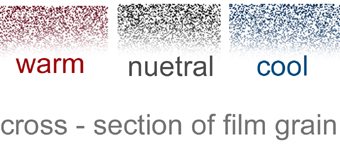Black & white enlarging - Fine Art Printing
When we think of black & white photographs most people think of an image that has monochromatic tones with no colour variations or subtleties. The richness inherent of colour photography is impossible, the wide colour range is entirely beyond the medium. It is an honest and modest medium it is only black and white.
The tones that we see on the paper are actually made from black/grey metallic silver and the white is the paper base. But this medium has its own syntax, its own special colours, tones and textures: a photographer can learn to control them; an educated eye learn to recognise them.
It is learning
to recognise them, select and control them that we are concerned with.
The photographic paper base can be manufactured in numerous textures,
tones and surface finishes. The emulsion layer alone can make the
silver images look warm or cool, sharply contrasted or softly modulated.
Despite the fact that the emulsion is B&W, colour variation is possible since not all grey is simply grey. While the changes are subtle, the silver may appear to be neutral black, blue-black, warm-black, brownish, reddish or greenish. These variations reflect the size and structure of the of the developed silver grains. |
A photographic emulsion composed almost entirely of silver chloride or silver bromide produces the coldest tones (blue Black). A mixture of both silver chloride and silver bromide produce warmer tones (red/brown). Emulsions in which silver chloride predominates are not very sensitive and are mainly used for contact printing.
